Untouched land can quickly become an eyesore. The weeds start to take over, the grass grows tall, and saplings quickly sprout. In a short amount of time, growth can become too thick for a lawnmower to be effective. The simplest way to clear the unwanted mess from unmanaged land is with a closed front skid steer brush cutter attachment.
But what do you need to know before going out and making that sort of investment? Between the different models, attachments, and safety guidelines, skid steers can be a pretty intimidating investment without the right info. Below, we walk you through the most important things to keep in mind when purchasing your closed front skid steer brush cutter.
- Closed Front Brush Cutter Applications
- Important Features to Consider
- Closed Front Cutter Types and Options
- Matching a Cutter to your Skid Steer
- Safely Operating Skid Steer Brush Cutters
- Maintaining Brush Cutters
CLOSED FRONT BRUSH CUTTER APPLICATIONS
Brush cutter attachments with closed fronts are perfect for clearing grass, weeds, undergrowth, and thick brush. Most skid steer mowers are able to cut trees up to 3” thick in diameter.
A closed front brush cutter doesn’t allow debris to escape the deck easily, which provides extremely efficient mulching. Leaves, limbs, and saplings break down into small chips and pieces, resulting in a consistent, finished look.
If your primary goal is cut brush and trees as quickly as possible, then an open front brush cutter may be the better choice.
IMPORTANT FEATURES TO CONSIDER
The skid steer brush cutter you purchase needs to have the required structural strength and quality components to withstand the stress that comes with this type of work. When purchasing a new or used skid steer mower there are several important things to consider:
1. QUALITY USA MADE SPINDLE
The spindle is the most expensive and important performance component of a skid steer brush cutter attachment. Choosing a cutter with a thick, high-quality spindle is an absolute must when making a brush cutter purchase. The spindle is important because it is responsible for smoothly transferring power from the hydraulic motor to the flywheel and absorbing dangerous impacts that could damage the system.
Note that if you don’t maintain your spindle shaft with proper lubrication it’ll fail quickly.
Be careful and ask plenty of questions if you’re considering buying a used brush cutter. If you’re buying one from a previous owner, ask them if they maintained the gear oil to keep the spindle lubricated. (It’s probably a bad sign if they have no idea what you’re talking about.)
2. REINFORCED MOWER DECK
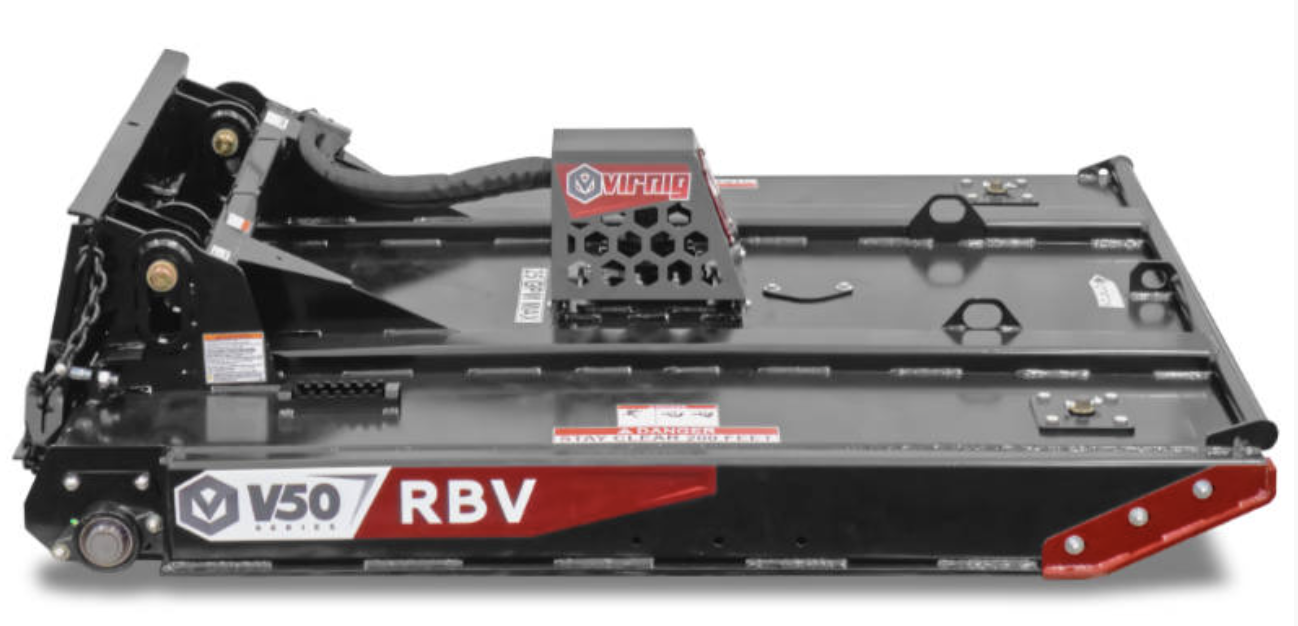
Take a close look at the steel reinforcements on top of the mower deck. Your mower deck must include reinforcements since it’s the support structure for the entire mower. The deck should consist of thick, high-grade steel with cross members running across the entire length of the mower deck.
When looking at the deck’s bracing support, steel grade rating and steel thickness are all equally important. There should also be bracing around the motor to help withstand the tremendous force that comes from the spinning flywheel and the blades underneath.
3. HEAVY-DUTY FLYWHEEL
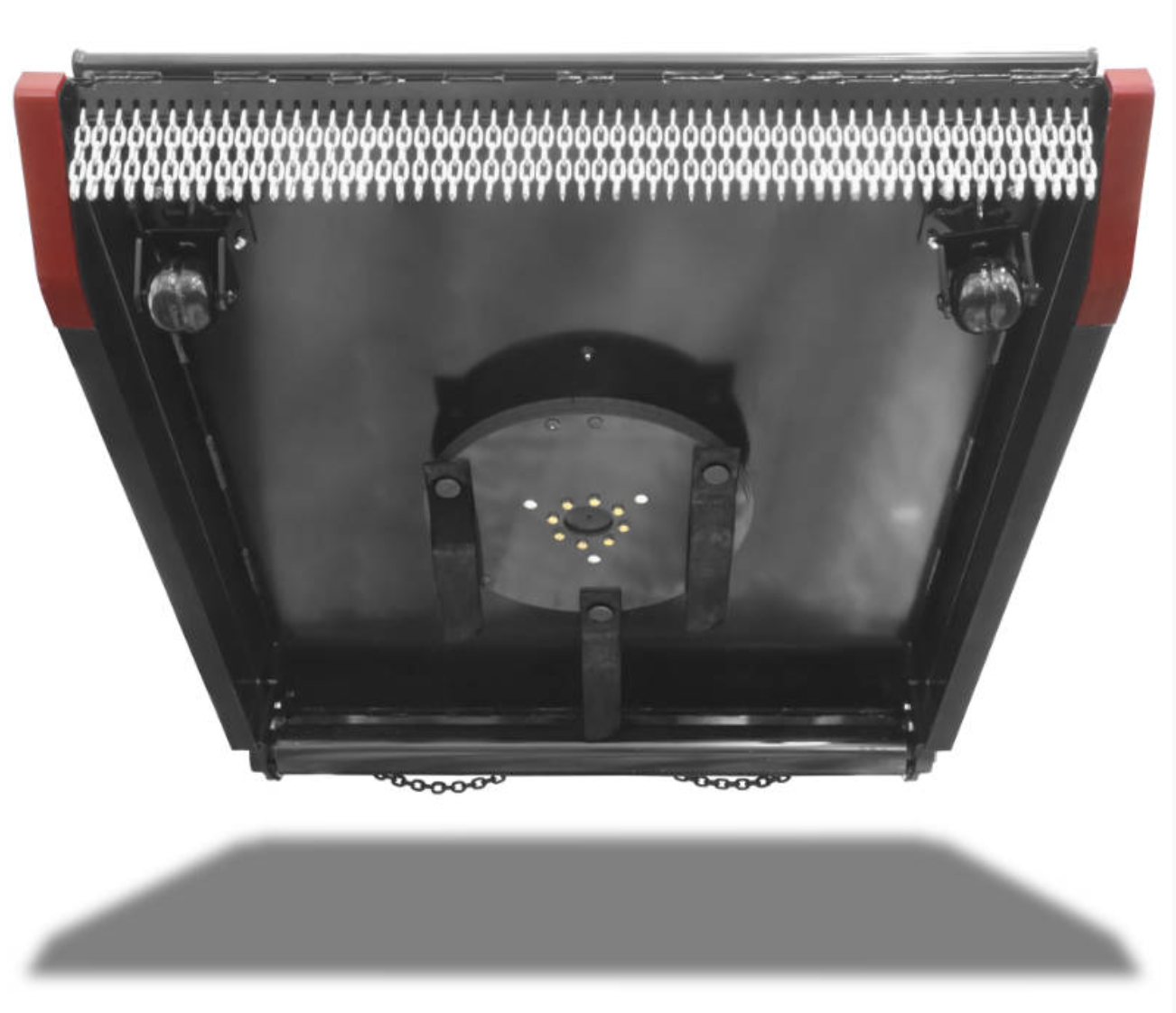
For larger debris, you’ll need a heavy-duty flywheel. If it’s too light, the brush cutter will bog down and hurt performance. A heavier flywheel creates more inertia and provides a cleaner, more precise cut. A circular flywheel will also bounce off of stumps rather than catching and damaging the expensive motor components.
Between Virnig’s high-performance updraft flywheel blades, and our average blade speed of 15,000 FPM, nothing will stand in your way.
4. REINFORCED PUSH BAR
If your cutter needs to clear a fair amount of small trees and thick debris then a push bar is a must. Without it, the steel on the front deck can quickly deform and affect the brush mower’s performance. With Virnig’s high-strength steel push bars, you’ll keep damaging materials away from your front deck, and mow over thick brush and trees without a problem.
5. HYDRAULIC PRESSURE RELIEF VALVES
Pressure relief valves protect the motor and the loader’s hydraulic system from pressure spikes. When the blades hit a large stump or rock, the relief valves open and relieve the pressure. This prevents seals or other internal components from damage due to excessive pressure.
Virnig has multiple hydraulic motor configurations to maximize performance and guard against dangerous pressure spikes, thus increasing the overall longevity of your attachment.
6. REPLACEABLE SKID SHOES
Skid shoes increase the mower deck’s wear life and add protection. Skid shoes help the skid steer mower glide over soft, uneven terrain instead of gouging into the ground.
7. SAFETY FEATURES
A skid steer brush cutter motor that features dynamic braking will safely stop the flywheel in about ten seconds. Without a braking system, the blades could keep spinning for minutes. Dynamic braking combined with pressure relief valves makes for a very reliable and low-maintenance drive system, which is why these are standard features on Virnig products.
The brush cutter attachment should have a safety feature that prevents the cutter’s deck from going above the cab door. This keeps the cutter close to the ground and limits flying debris, which helps protect the operator.
ADDITIONAL FEATURES
With a solid, reinforced deck, a quality spindle, and a heavy-duty flywheel blade combination you are off to a good start when purchasing a durable skid steer mower.
From here you must decide if any additional features fit into the budget. Some common features are front casters and rear rollers to help keep the skid steer mower stable. Another option is an auto-floating deck that automatically adjusts the cutter height as it moves across the terrain.
CLOSED FRONT CUTTER TYPES AND OPTIONS
Asking “What is the best closed front cutter?” is a tough question to answer. Ultimately, the response depends on the conditions you’ll need it for. Here are the basic types of closed front brush cutters you’ll likely be choosing from.
STANDARD, FIXED DECK BRUSH CUTTERS
When it comes to relatively flat or even surfaces, you’ll want a standard deck brush cutter attachment since they will be less expensive than a floating deck brush cutter.
FLOATING DECK BRUSH CUTTERS
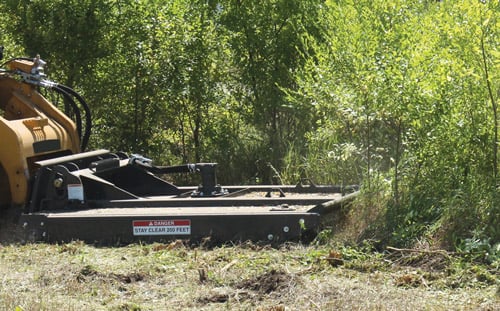
For a more consistent cut on uneven terrain, a floating deck skid steer brush cutter is your go-to. A floating design allows the deck to form itself around the ground you’re working on. It greatly reduces the chances of scalping or gouging the ground, making for a cleaner cut.
In situations where the floating deck isn’t necessary, you’ll want a way to lock it into a fixed position. For example, if the ground is very soft and the deck needs to hover above or barely touch the ground, a locking mechanism becomes extremely helpful.
REAR ROLLER
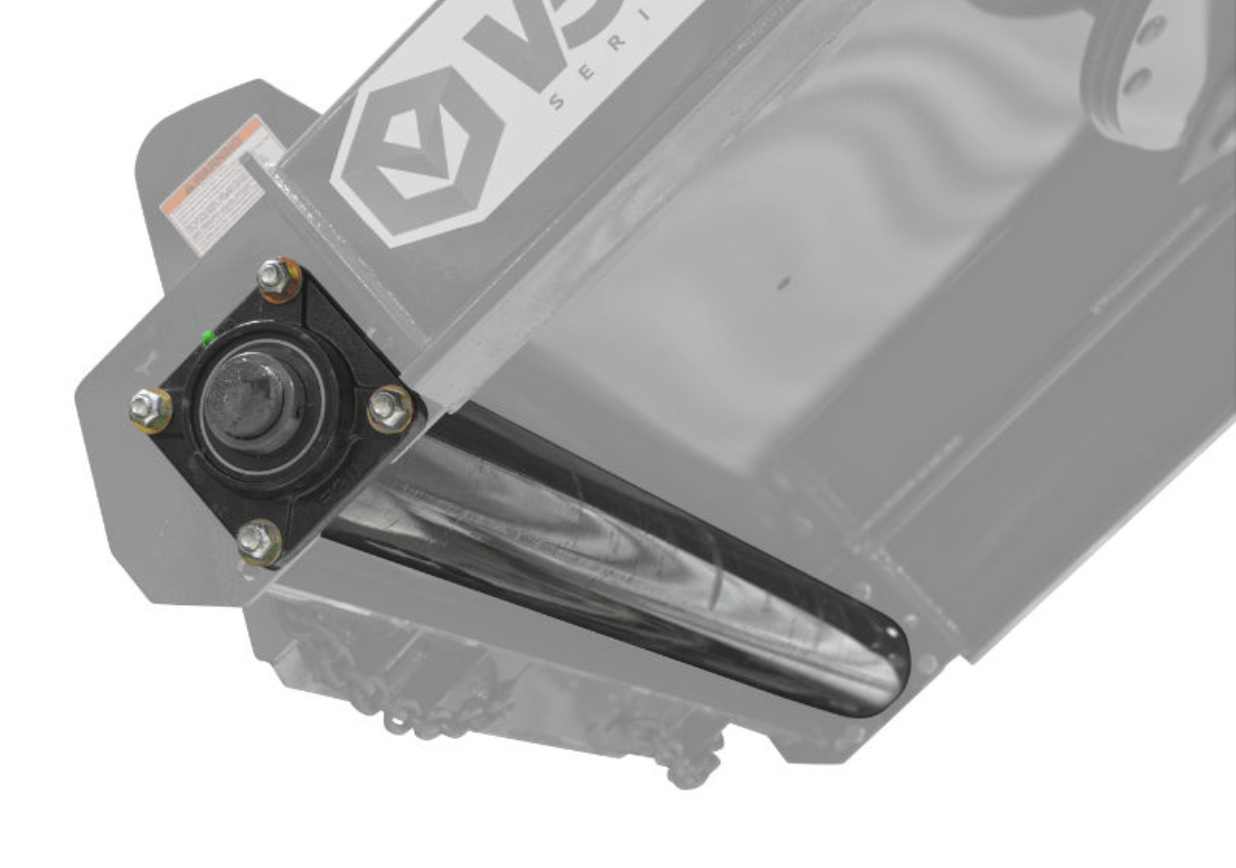
A roller has a large, tubular weldment with bearings on the outside of the deck. A Rear Roller model will compact leftover material and give you a better cut by keeping the back of the deck from gouging into the ground.
Rear roller attachments are an option for Virnig’s Floating Deck Brush Cutter and lend stability to the system’s overall performance.
SWIVEL CASTERS / WHEELS
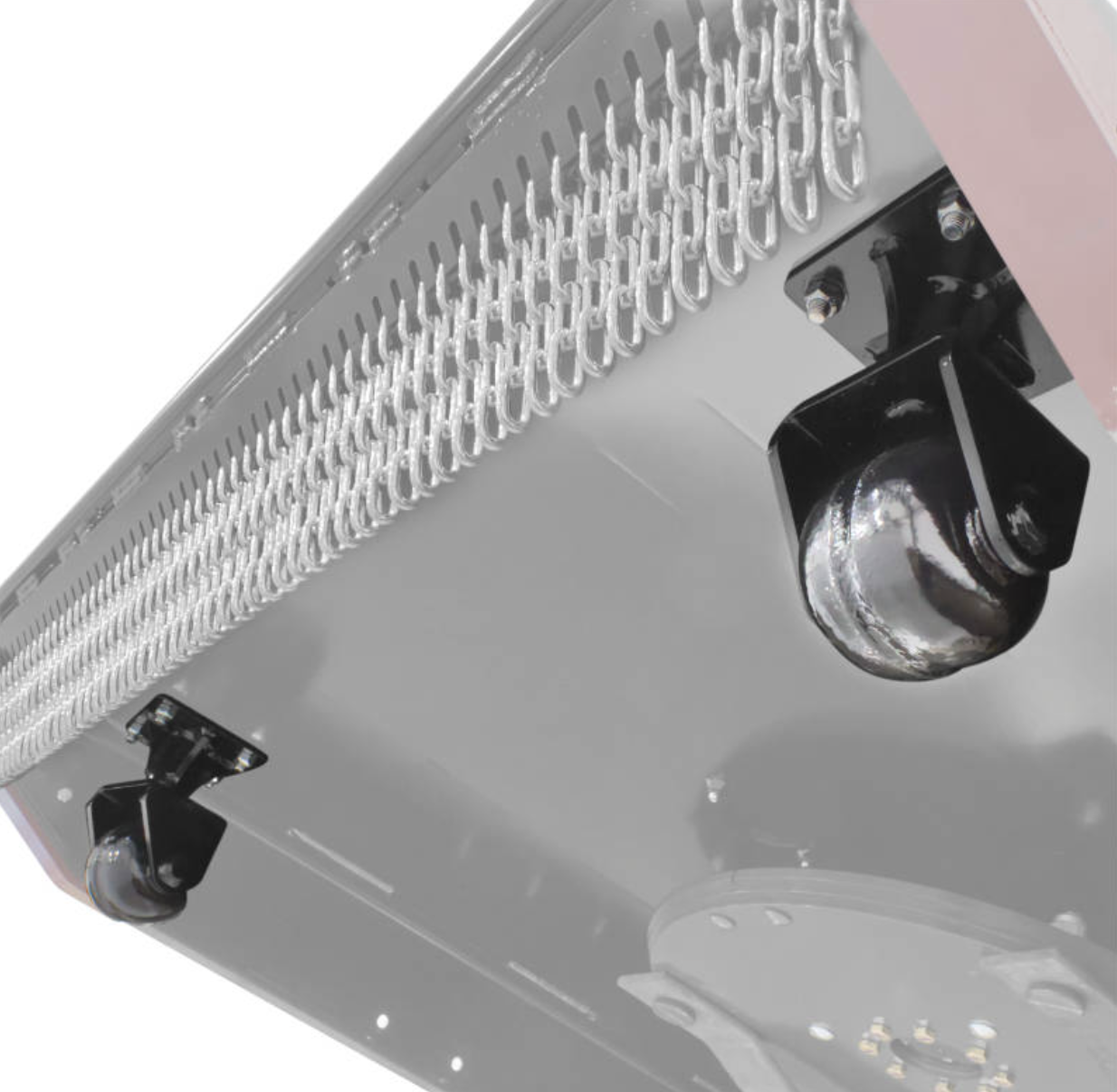
Caster options provide support with pivoting solid steel wheels placed on both front corners of the brush mower. They help prevent the cutter from scalping and gouging, which results in a clean, consistent cut. These 360-degree rotating swivel casters are better than fixed wheels because they allow the brush cutter to maneuver from side to side more easily.
Pairing swivel casters and a rear roller will help produce a better cut, a smoother ride, and prevent gouging and scalping. These options also provide extra value by minimizing wear on the underside of the brush cutter frame and skid shoes. Add these options to a floating deck brush cutter for maximum effectiveness.
MATCHING A CUTTER TO YOUR SKID STEER
Effective mowing always requires a suitable machine. With so many options to choose from, it’s important to match the brush cutter to the overall skid steer width, as well as the flow rate capabilities of your skid steer’s hydraulic system.
CUT WIDTH
A common question is “What width should I purchase?”
The answer? You should purchase a brush mower with a cut width that’s wider than the tires or tracks of your skid steer. If the cut width doesn’t cover the tracks, then you increase the risk of running over uncut debris—debris that could damage your skid steer tires.
But bigger is not always better. Selecting a brush cutter attachment that’s too wide will:
- Increase weight
- Increase overall cutting surface area
- Require more power to run effectively
These factors can negatively impact performance.
SKID STEER FLOW RATE
You must know the flow rate of your skid steer and the minimum and maximum flow rate of the brush cutter motor. Manufacturers measure flow rate in gallons per minute (GPM).
To get the most out of your cutter, your flow rate should fall within the min/max range of the brush cutter motor. Ultimately, the motor can’t handle going over its maximum flow rate rating. If it’s forced to exceed the flow rate rating, you’ll likely void your warranty and damage your system.
Flow rate examples:
- If you use a Standard Flow brush mower motor in High Flow, the motor will be under too much stress. It may not fail immediately, but you’ll quickly cause irreparable damage, and soon the motor will fail completely.
- If you use a High Flow brush mower on a Standard Flow skid steer, you won’t be able to max out your performance.
SKID STEER OPERATING CAPACITY
Another factor to consider is the operating lift capacity of your skid steer loader. Brush cutters generally weigh about 1500 pounds, and when you include an optional rear roller and casters the cutter will weigh 200-300 pounds more. Always check the attachment’s loader capacity to make sure your skid steer has the tools to effectively handle the skid steer brush mower.
SAFELY OPERATING SKID STEER BRUSH CUTTERS
For maximum safety, take the time to read and understand the brush cutter’s manual before operating. The main rule is to keep bystanders at least 200 feet away from the cutter while it’s running. But here are some other general tips to safely operate skid steer brush cutter attachments.
IMPORTANT SAFETY INFORMATION
When operating a skid steer brush cutter, it's important to remember these safety guidelines.
- Never lift the blades above the cab door.
- Never operate a brush cutter without a shatterproof cab door on your skid steer.
- Before cutting, look for rocks, fence wire or other damaging items.
- Wait on the skid steer until the cutter’s blades stop spinning. Any time the blades are off the ground and in motion, they’re a danger to anyone who gets too close.
- Tracks are a must on soft ground. Tires can dig deep into the ground and lead to slow, poor performance.
MAINTAINING BRUSH CUTTERS
Whether you buy a new or used skid steer mower, it’s always important to keep up with regular maintenance and replace worn or defective parts as soon as you spot them.
The most important maintenance tip we can give you is to make sure that the spindle has the right amount of gear oil at all times. We hear cases of part failure all the time from operators who could have avoided problems simply by properly lubricating their systems.
Also keep a close eye on wear parts like the blades and skid shoes. The brush mower will have areas that need greasing and you’ll need to check the gear oil regularly. (Just make sure to fill it with the right oil.)
Take great care of your skid steer brush cutter attachment. Use the cutter’s manual for maintenance information and stick to a schedule. You can count on years of reliable performance if you are diligent about proper maintenance.
RECLAIMING OVERGROWN PROPERTY
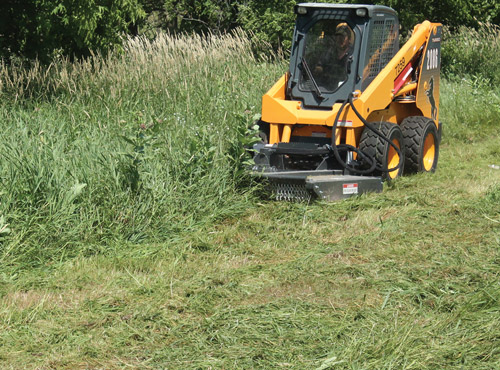
Our skid steer brush cutters are an excellent choice for clearing and mulching heavy undergrowth and small trees. Don’t let weeds and tall grass take control of your land this year. Contact Virnig today and get a quote on the perfect skid steer brush mower to clear pesky overgrown brush and reclaim your terrain.

